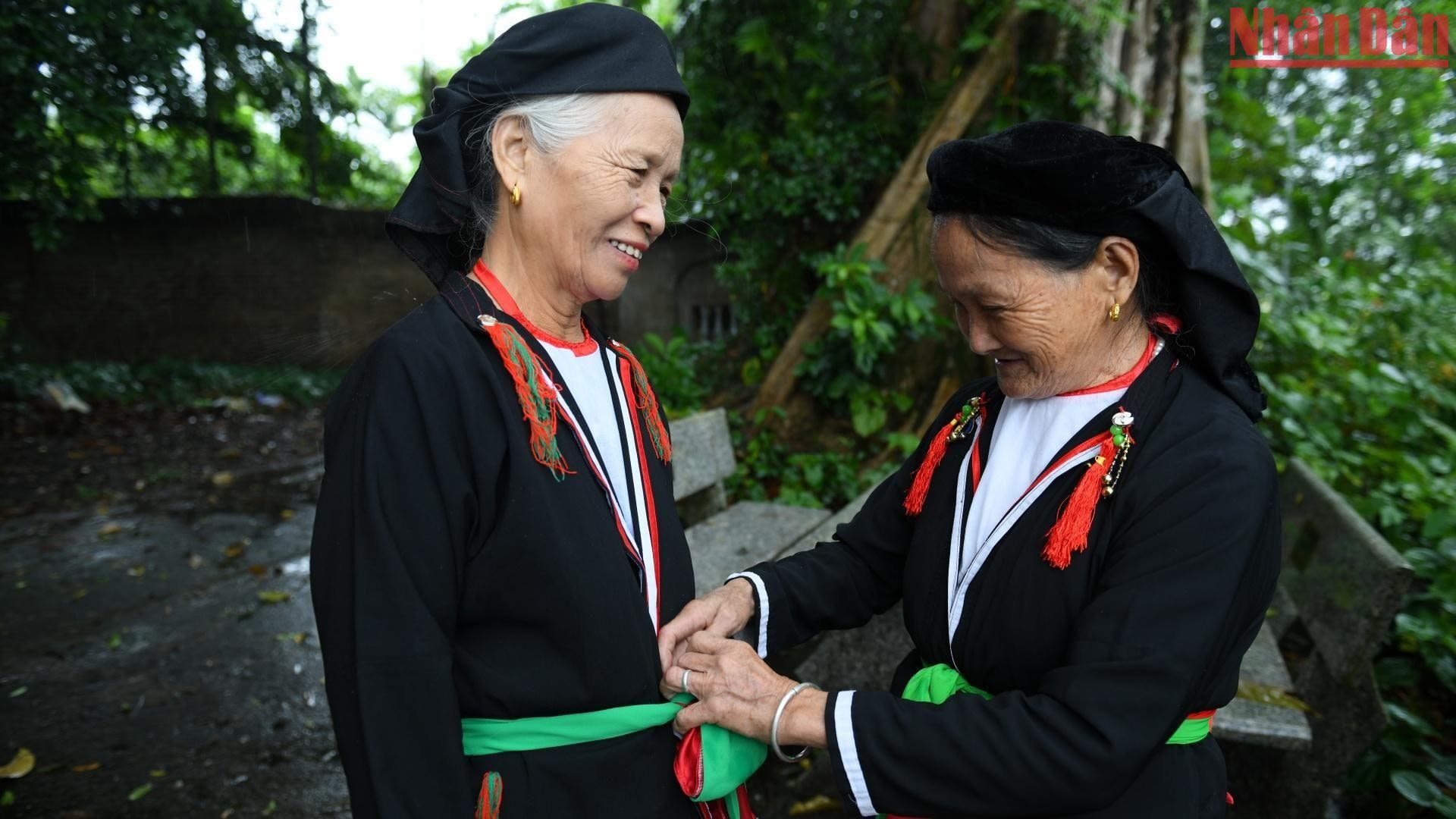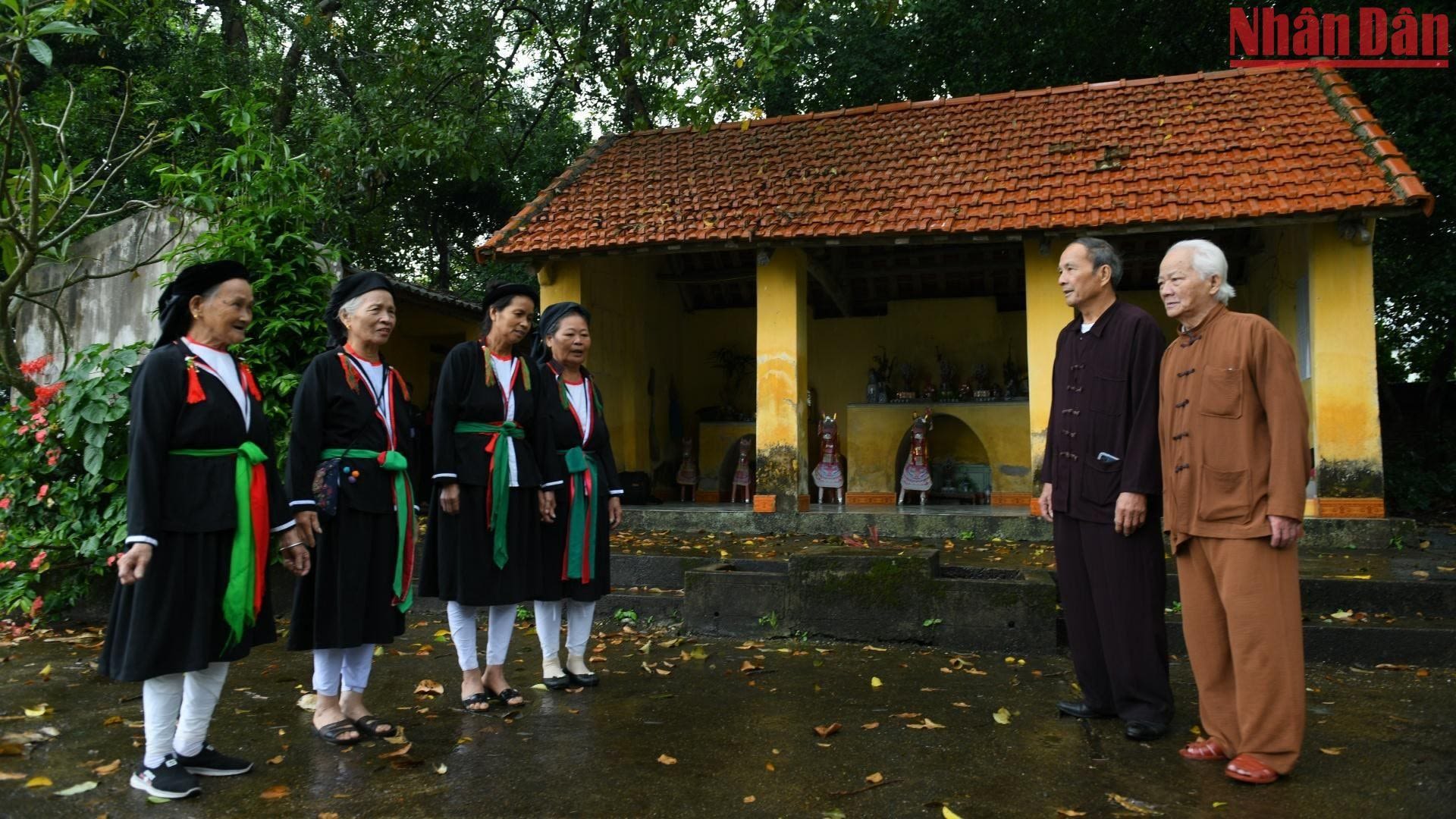
San Diu is one of 53 ethnic minority groups under Sino-Tibetan language family. As a result of living next to Chinese people in the southern region for a long time, San Diu people have gradually lost their mother tongue (Dao language) and absorbed the Cantonese dialect.
♦ Language: San Diu is one of 53 ethnic minority groups under the Sino-Tibetan language family. As a result of living next to Chinese people in the southern region for a long time, San Diu people have gradually lost their mother tongue (Dao language) and absorbed the Cantonese dialect.
♦ Residence: San Diu people reside in several provinces and cities including Thai Nguyen, Vinh Phuc, Bac Giang, Quang Ninh, Tuyen Quang, and Hai Duong. They gather in separate clusters, or intersperse with other groups of Chinese, Kinh, Tay, and Nung in the locality.
♦ History: Regarding the ethnic origin, based on the self-identified name as Son Dao, it can evoke many thoughts about the origin of the San Diu ethnic group. Researcher Ma Khanh Bang surmised that the San Diu people originated from the Dao ethnic minority group. During ancient times, the Dao ethnic community was dominated and suppressed by the Chinese feudal state, causing this group to wander to other localities to make a living and develop. The San Diu are one of those groups.
1. Historical Origin
Regarding the ethnic origin, based on the self-identified name as Son Dao, it can evoke many thoughts about the origin of the San Diu ethnic group. Researcher Ma Khanh Bang surmised that the San Diu people originated from the Dao ethnic minority group. During ancient times, the Dao ethnic community was dominated and suppressed by the Chinese feudal state, causing this group to wander to other localities to make a living and develop. The San Diu are one of those groups.
2. Population, language
Population: According to the census data on 53 ethnic minorities as of 1 April 2019, the total population of San Diu ethnic group around the country is 183,004; of which, 54,901 are male and 88,261 are female. The number of households is 54,901, and the proportion of population living in rural areas accounts for 89.8%.
Language: San Diu is one of 53 ethnic minority groups under Sino-Tibetan language family. As a result of living next to Chinese people in the southern region for a long time, San Diu people have gradually lost their mother tongue (Dao language) and absorbed the Cantonese dialect.
In the past, young people used to learn Chinese characters to become shamans, but now very few people know Chinese characters.
3. Geographic distribution
San Diu people reside in several provinces and cities including Thai Nguyen, Vinh Phuc, Bac Giang, Quang Ninh, Tuyen Quang, and Hai Duong. They gather in separate clusters, or intersperse with other groups of China, Kinh, Tay and Nung in the locality.

Photo: Thanh Dat
Photo: Thanh Dat
4. Main features
Cuisine: San Diu people eat plain rice and cassava. After a meal, they often eat a bowl of thin porridge, similar to the Nung people.
Costumes: Women’s traditional clothes include a black scarf and unlined and lined long dresses. For lined dresses, the inner layer is white while the outer one is indigo and a little longer. They also wear red bellybands and white, pink, or blue belts. Jewellery includes necklace, bracelet, earrings and a silver wire used to hang keys and other small jewellery.
Men dress in clothes like the Vietnamese, including wearing hair in a bun, a turban, a dark long dress, and white pants.
Housing: San Diu people live in the midland of the North, from the left bank of the Red River to the east.
Marriage: The wedding custom of the San Diu people consists of many rituals, including a ceremony at the bride's house the day before the bride is taken to her husband’s house. A bottle of wine and a plate is taken out and the plate is lined with two pieces of floral paper. Two boiled eggs with two coins tied on their sides with red thread are placed on the plate. Following the offering ritual, attendees peel the eggs and mix the yolks with wine to drink to celebrate the happiness of the bride and groom.
Worshipping: On the altar, there are usually three incense bowls to worship ancestors, shamans and ‘tao quan’ (Kitchen Gods). For those who have just died and have not yet been buried, the incense bowls to worship them are also put on the altar but in a lower position. In addition, San Diu people also worship the earth god at the communal house.
Festivals: San Diu people have similar festivals as many other ethnic groups in the region. In particular, the Dong chi (winter solstice) festival offers a chance for local people to pray for more children. For those who have been married for a long time but still have no children, after the festival, the wife returns to her parents' house and the husband lets the matchmaker come to ask for the wedding again.
Calendar: San Diu people use lunar year.
Music: San Diu sing the love song between men and women, called “soong co” (singing at night).

Photo: Thanh Dat
Photo: Thanh Dat
5. Economic conditions
Farming: San Diu people live on the low hills in the midland which are gentle like the shape of an upside-down bowl. The climatic and hydrological factors are not very favourable for crop development. However, San Diu people still survive on rice, potatoes, corn, and cassava roots. They cultivate on four types of fields: swampy, wet, terraced, and upland.
Animal husbandry: San Diu people focus on raising livestock not only for traction and meat but also for manure to improve the fields. Common poultry are chickens, ducks, and geese. Pig farming is very popular because they have a food source from secondary crops.
In places near forests or hills, people develop beekeeping for honey. Silkworm is also cultivated by some people, but it is an economic activity that garners little attention.
Exploiting forest products and hunting: In the residence area of San Diu people, there are many essential forest products such as wood, bamboo, leaves, tubers, wild vegetables, medicinal plants, and firewood. They provide favourable conditions for San Diu people to exploit towards their daily needs.
With San Diu people in Tuyen Quang Province, collecting plants, including orchids, for home decoration has become popular. In addition, they have also brought economic value to the people.
In addition to exploiting forest products, the San Diu also hunt wild animals.
Handicrafts: In addition to agricultural production, San Diu people do secondary occupations such as knitting, spinning, weaving, pottery, carpentry, and blacksmithing.
In the past, San Diu people used do paper and write with brush and Chinese ink to record genealogies, literature, calendars, fairy tales and poetry.